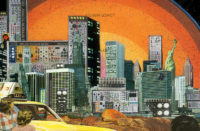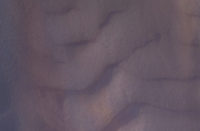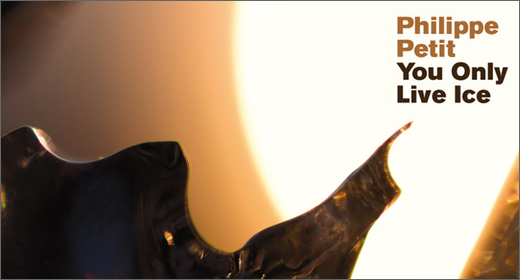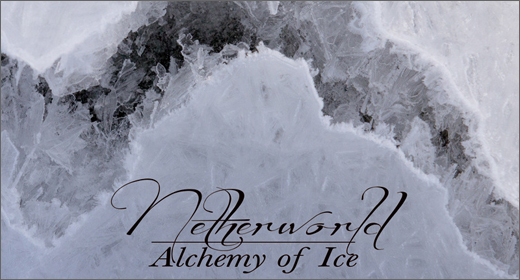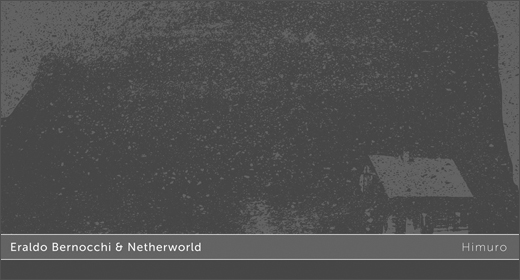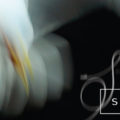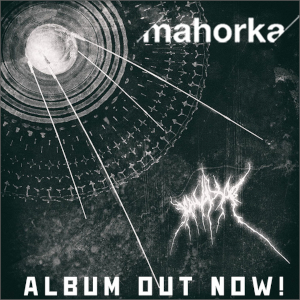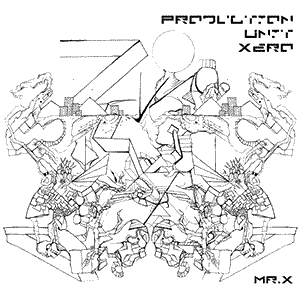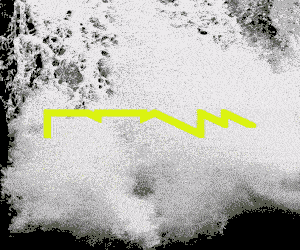Glacial Movements has not been entirely unwavering in its frozen isolationist brief. In terms of its original ambit, targeting ‘places that man has forgotten…icy landscapes…fields of flowers covered eternally with ice. The cold and silent night that falls upon the glacial valleys,’ Curator Alessandro Tedeschi’s aim has not always been true, the movements of one or two of his crew not so much glacial as wet, more cod-spiritualist than isolationist. Latest GM offerings, Tele and Descending Into Crevasse, though, constitute a timely return to form. Decidedly cool customers, the former features Pjusk’s Nordic expressionism, the latter Retina.it’s Italian design. Both are congruent realizations, joining the likes of Lull (2008), Skare (2009), Loscil (2010), not to mention the man himself (2011) in full compliance with the GM programme.
:: :: ::
[Release page] Rune Sagevik and Jostein Dahl Gjelsvik’s origins on the West coast of Norway and the provenance of their music from a small mountain cabin are typically invoked to surreptitiously sneak in ambient credentials. Spurious promotional moves aside, it effectively sets up a representational scaffolding for Pjusk’s glacial synthesis, shadowy atmospherics, and naturalistic rhythms. With Tele, though, semiosis is simple. The title refers to frozen underground water, then there are, variously, “twilight,” “fog,” “hollow,” and geological forms (“Granitt,” “Flint”), backed with a scree of scrunch and static. Secondary signification comes by association with kinsman, Biosphere, whose works are drawn from the same landscape (cf. Polar Sequences), linked in audio-culture. Their compositions create affordances for the travelling-without-moving school of inner-voyagers. Development evident between debut, Sart, and follow-up, Sval, continues on Tele:“…a natural progression from Sval on 12k to explore further the themes of elemental forces and unforgiving nature.” From the off “Fnugg” is permeated by a viscid timbrality, one of liminal environmental otherness, before it’s rent by a huge reverberant hornblast, heaving the ominous “Gneis” forward; discomfiting geo-rumbles and eerie audio halation effects predominate. “Flint” sustains the tenebrous tenor of near-dark ambient field recording until towards its end when an electronic switch is flicked, signalling an upward shift seguing through “Skifer.” Bass pulse and a re-formed psy-chill synth figure, residue perhaps of a previous life as techno-kids, re-orient proceedings; progression from here is through slow looping motifs and warmer synth textures, opening up to rhythm, harmony and melody, and lighter atmospheres, albeit remaining in arctic light. “Krystall” is a similarly tooled synth + beats cousin of the cerebral ‘ambient groove’ once the preserve of em:it, or, more recently, the intelligent psy-trance of Ultimae. The trio of “Kram,” “Bre” and “Polar” are an effective closing gambit. The first is a highpoint with its Biospher-ical hypnagogue synth recursions, while the last reprises the foghorn leitmotif, less ominous, to a creeping headnod pulse and atmo, sequencer on stun, and spatial guitar. The foreboding of the early sections is largely dissipated, a feeling of pacificity presiding, as if harsh winter were ceding to the apertures of spring. The duo’s Jekyll and Hyde sides are clear to hear, as they shift from familiar tenebrous terrain earlier to more unwonted lighter lands later. They offer: “We actually feel the album pushing in two directions. One being more abstract and perhaps darker, the other being warmer and slightly easier on the ear. This is a conscious experiment and something that automatically leads to a less homogeneous sound. Nevertheless, hopefully we are not distancing us too much from our origins.” (Reference)
:: :: ::
[Release page] Lino Monaco and Nicola Buono’s Retina.it project has been active since the early ‘90s, forging a name for deep ambient soundscaping heavy on modular and digital synthesis. Ordinarily the Neapolitan duo’s dealings are dense gritty affairs located towards the sharper end of the experimental electronic cline. Descending Into Crevasse, though, is something of a departure, responding to the Glacial Movements brief in more meditative mode with a symbolic psychonavigation down ice crevasses. Its parts coalesce in slow looping sequences diving into vast reverb nebulae, shivery synthesis colluding with neo-classical orchestrals, attended by unquiet field recordings, sudden oneiric incursions and spectral entrances. “Synth On Axis” sets a brittle frosted tone with chilly Zephyr blasts and chthonic resonance, a slow flow through a droning expanse hazed with exponential reverbs, laced with sundry bleeps, glitches and animal-esque cries. On “Moonshine” a series of piano loops is set in motion, phase shifting into convolving timbral shimmy and shimmer. On “Freezing the Fourth String” the duo draw out an initial drone, thread it through with particulate electronic fragments, then bring strings to tumescent ambience, as if of draughts of Shenzhou they had drunk, fulsome timbres and swooping arcs in relief against the less generous electronics. Rhythmic pulsations propel “-32°F Porcelain, Metal & Ice,” with a recall, albeit not total, of Mr Jenssen again, this time echoes of the pacific arcticism of his Substrata. While the early section is largely devoid of isolationist doom-tropes, a darker introspective tenor progressively sets in, the eponymous abyssal descent modeled at the meta-level of sound architecture. The gloom starts gathering on “Attrazione Magnetica,” a foreboding, attended by muffled recursive blows. Ominous rumblings continue on the title track whose dystopian mien is in stark contrast to previous—a harsh desolate affair punctuated by strident screeches and nervous strings. The emergent oppressive tenor may leave a discomfiting taste in the listening mouth, but overall Retina.it makes something particular out of the glacial isolationist construct, offsetting caustic components with more alluring ambiance.
:: :: ::
Both releases are out now on Glacial Movements.






